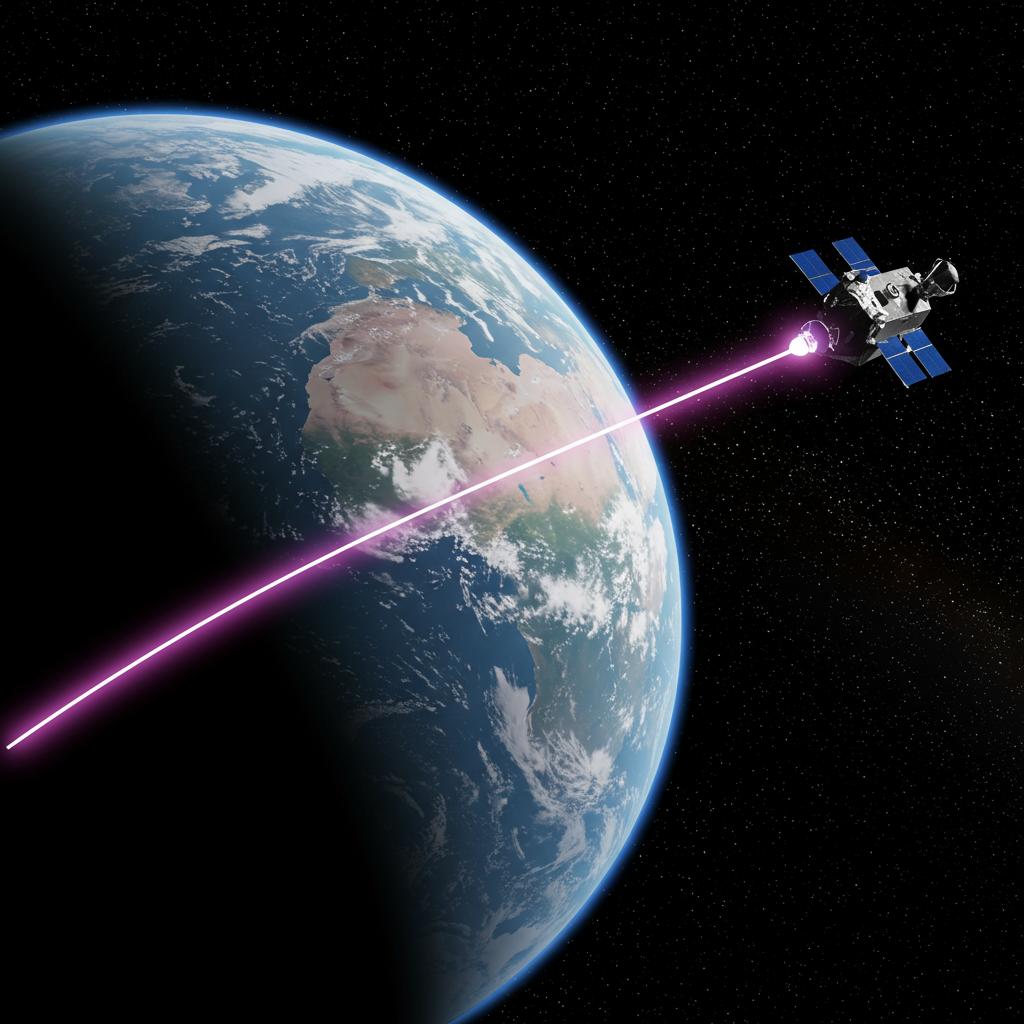A rare visitor from beyond our solar system is currently making a brief, fascinating passage through our cosmic neighborhood. Officially designated interstellar comet 3I/atlas, this object represents only the third confirmed visitor known to science that originated from another star system. Its presence offers astronomers a unique, fleeting opportunity to study material from an entirely different stellar environment, providing clues about the universe far beyond our sun’s influence.
Discovery and Designation of 3I/ATLAS
The initial detection of this remarkable object occurred on July 1, 2025. It was first spotted by the NASA-funded ATLAS (Asteroid Terrestrial-impact Last Alert System) survey telescope located in Rio Hurtado, Chile. While observed by ATLAS on July 1, astronomers later traced its presence back through archival images to June 14, 2025. The comet arrived from the direction of the constellation Sagittarius.
Following its discovery, the Minor Planet Center (MPC) officially designated the object as 3I/ATLAS. The “3I” prefix is crucial – it signifies that this is the third recognized interstellar object to pass through our solar system. This places it in an elite category, joining the ranks of the mysterious ‘Oumuamua (discovered in 2017) and the well-studied comet 2I/Borisov (discovered in 2019). The “ATLAS” part of the name credits the discovery survey.
An Unexpectedly Substantial Visitor
Compared to its two known interstellar predecessors, 3I/ATLAS appears to be a significantly more substantial object. Early estimates suggest it could be as large as 12 miles (nearly 20 kilometers) wide. This size would make it considerably larger than both ‘Oumuamua and Borisov. Its brightness also seems to exceed that of the previous two visitors, which initially led to some intriguing speculation about its nature.
At the time of its initial reporting, 3I/ATLAS was located approximately 4.5 astronomical units (AU) from the sun, which translates to about 670 million kilometers (416 million miles). Its brightness was measured around magnitude 18.8, making it far too faint for observation with typical backyard telescopes. Only large, professional instruments could currently detect it.
Trajectory and Current Status
Interstellar comet 3I/ATLAS is currently hurtling through our solar system at a remarkable speed relative to the sun. It’s travelling at approximately 68 kilometers per second (152,000 mph). Its current trajectory confirms its origin outside our solar system; it is on an elliptical path that will take it through our system and then back out into interstellar space, never to return.
The comet is on a path towards the sun, and astronomers expect it to brighten as it gets closer. Its closest point to the sun, known as perihelion, is projected to occur on October 30, 2025. At perihelion, 3I/ATLAS will be about 1.4 AU (130 million miles or 210 million kilometers) from the sun. This distance places it just inside the orbit of Mars.
Crucially, despite its speed and large size, NASA has confirmed that 3I/ATLAS poses absolutely no threat to Earth. At its closest approach to our planet, it is expected to pass harmlessly by at a distance of roughly 150 million miles. This is well beyond Earth’s orbit.
Cometary Activity and Scientific Debate
Initial reports from the MPC noted “tentative reports of cometary activity.” Observations have described the object as having a “marginal coma and a short 3″ tail.” A coma is the hazy envelope of gas and dust surrounding the nucleus of a comet, formed as ices vaporize when the object nears the sun. A tail is composed of material pushed away by solar radiation and the solar wind.
The observation of this cometary activity is highly significant. While the object’s unexpected size and brightness initially sparked some discussion, notably from Harvard astrophysicist Professor Avi Loeb, who suggested considering the possibility of an artificial origin (like an alien craft) if it weren’t a comet, the evidence of a coma and tail strongly supports a natural cometary explanation. The consensus among most astronomers is that 3I/ATLAS is indeed a comet, albeit a large and bright one from another star system. Professor Loeb himself has conceded that a cometary interpretation now seems the most likely scenario based on the observed activity.
Watching the Interstellar Comet’s Passage
For those eager to see this rare cosmic visitor, a special opportunity was provided shortly after its discovery. The Virtual Telescope Project hosted a live online broadcast of interstellar comet 3I/ATLAS on July 3, 2025. The livestream began at 6:00 p.m. EDT (2200 GMT) and showcased views captured by robotic telescopes located in Manciano, Italy, contingent on clear weather.
The Virtual Telescope Project also successfully captured an image of the comet on July 2. This photo, a 120-second exposure, clearly showed 3I/ATLAS as a sharp point of light moving across the sky, with background stars appearing as short trails due to the object’s rapid motion.
The Scientific Value of Interstellar Visitors
While we can’t intercept 3I/ATLAS with a spacecraft this time around, its passage is invaluable for scientific research. Studying objects like 3I/ATLAS provides astronomers with a direct glimpse into the composition and conditions of distant stellar systems. These interstellar objects carry pristine material from outside our own star’s influence, offering clues about planet formation and the diversity of matter throughout the galaxy.
Furthermore, the existence of interstellar objects like 3I/ATLAS lends weight to scientific theories like panspermia. This hypothesis suggests that life’s building blocks, or even simple life forms, could potentially be transported between star systems embedded within ejected debris like comets or asteroids. While previously thought improbable, the confirmed presence of these objects demonstrates a viable mechanism for material transfer across vast interstellar distances. Finding Earth’s basic organic building blocks within samples from a future interstellar object could significantly alter our understanding of the probability of life existing on other planets.
Future Observations
After its perihelion passage in late October and briefly being obscured by the sun, interstellar comet 3I/ATLAS is expected to become visible again in early December 2025. This reappearance will give astronomers another chance to conduct observations and gather more data on this unique visitor before it speeds away from our solar system permanently.
The detection of 3I/ATLAS highlights the increasing capability of surveys like ATLAS to find these faint, fast-moving objects. With the development of even more powerful future telescopes, such as the Vera C. Rubin Observatory, scientists anticipate discovering potentially thousands more faint interstellar objects in the coming years. Future observations might even allow for sample return missions to study these fascinating messengers from other star systems up close.
Frequently Asked Questions
What is 3I/ATLAS and why is it significant?
3I/ATLAS is a newly discovered comet that originated from outside our solar system. It is significant because it is only the third confirmed interstellar object ever detected passing through our solar system, following ‘Oumuamua and 2I/Borisov. Its large estimated size (~12 miles wide) and brightness are particularly notable compared to its predecessors, offering astronomers a rare chance to study material from another star system.
How could someone have watched 3I/ATLAS, and where can they find updates?
Shortly after its discovery, the Virtual Telescope Project hosted a live online broadcast of 3I/ATLAS on July 3, 2025, showing views from telescopes in Italy. While that live event has passed, updates and potential future viewing opportunities for celestial objects like 3I/ATLAS are often announced by astronomical organizations like the Virtual Telescope Project, NASA blogs focused on planetary defense and near-Earth objects, and reputable astronomy news websites.
Does interstellar comet 3I/ATLAS pose a threat to Earth?
No, interstellar comet 3I/ATLAS poses no threat to Earth. NASA has confirmed its trajectory is taking it safely through our solar system. Although it is large and moving very fast (152,000 mph), its closest approach to Earth will be approximately 150 million miles, which is well outside our planet’s orbit.




